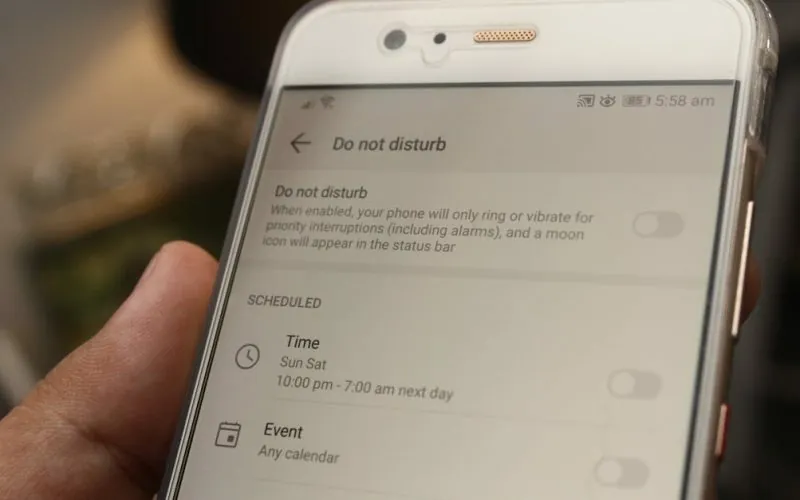Table of Contents
ToggleIn the world of texting, the battle lines are drawn between iPhone and Android users. Picture this: you send a message to your Android friend, and you’re left wondering if they’ve read it or if they’re just ignoring you. It’s a classic case of digital curiosity, and it’s got everyone buzzing. Can iPhone users actually see when their Android pals have read their texts?
Understanding Read Receipts
Read receipts provide insight into whether a message has been seen. Their functionality differs between iPhone and Android users, which leads to confusion and frustration in cross-platform communication.
What Are Read Receipts?
Read receipts indicate when a recipient has opened a message. Users receive a notification that the message was read. In messaging apps like iMessage, the sender sees a “Read” status, enhancing communication transparency, especially among iPhone users. Android users generally experience a lack of these notifications in standard texting applications. While some third-party messaging apps offer this feature, native messaging lacks the same functionality.
How Read Receipts Work on iPhone and Android
On iPhones, read receipts can be enabled or disabled in settings. When activated, senders know exactly when their messages are opened. While iPhone users enjoy this interactive feature, Android’s default messaging services don’t provide it. Android users may only rely on delivery confirmations, which appear as check marks. Third-party apps like WhatsApp or Signal offer read receipts on Android, allowing users to see when messages are read. Understanding these differences is crucial for effective communication between platforms.
Differences Between iPhone and Android Messaging
Messaging on iPhone and Android presents significant differences that affect user experience. Understanding these distinctions clarifies communication barriers between platforms.
iMessage vs. SMS
iMessage, exclusive to Apple devices, uses the internet for sending messages. Messages through iMessage appear in blue bubbles, signaling better features like higher-quality media sharing and group chats. SMS, utilized by Android, sends messages via cellular networks and appears in green bubbles. This standard lacks many advanced features offered by iMessage, limiting functionalities like animated effects or stickers. Users often notice the disparity in delivery notifications, affecting their understanding of message status.
Read Receipt Features on Different Platforms
Read receipts vary between iPhone and Android systems. iPhone offers this feature consistently through iMessage, allowing users to see when a message has been read. This feature increases transparency in conversations. Conversely, Android’s native messaging services typically do not provide read receipts. Some third-party apps, like WhatsApp or Facebook Messenger, offer this capability, but many Android users rely on traditional SMS without any notification of whether messages are seen. Consequently, this gap complicates interactions for iPhone users communicating with Android counterparts.
Can iPhone Users See When Android Users Read Their Text?
iPhone users cannot see when Android users read their text messages. This limitation stems from fundamental differences in messaging systems and the functionalities they offer.
The Limitations of Cross-Platform Messaging
Cross-platform messaging presents significant challenges. iMessage provides read receipts for iPhone users, showing when messages are read. Android’s native SMS services do not offer read receipts, creating a communication gap. Although some third-party messaging apps for Android integrate read functions, they are not universally used. Consequently, iPhone users cannot confirm whether their texts to Android users have been viewed. Frustration often arises when messages lack visibility, highlighting the limitations imposed by their differing platforms.
User Privacy and Settings
User privacy affects text interactions. iPhone users benefit from customizable read receipt settings. Users can enable or disable these receipts based on personal preference. On the other hand, Android users typically lack such settings, resulting in a uniform experience without read confirmations. Privacy regulations further complicate cross-platform texting, as not all apps communicate information consistently. Thus, iPhone users remain unaware of whether Android counterparts open or ignore messages, reinforcing the communication divide between the two operating systems.
Understanding the differences in messaging capabilities between iPhone and Android users is crucial for effective communication. iPhone users often find themselves in the dark when messaging Android users due to the absence of read receipts in standard SMS services. This gap not only leads to frustration but also highlights the broader challenges of cross-platform communication.
While third-party apps may offer some solutions for Android users, they don’t bridge the divide created by the fundamental differences in how each platform handles messaging. As technology continues to evolve, the hope is that these disparities will lessen, allowing for smoother interactions between users of both systems. Until then, recognizing these limitations can help set realistic expectations for communication across devices.





